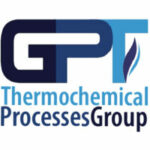
Call:
Email: jruizp@unizar.es
Address:
ABOUT ME
Resarch Interests
Energy from biomass, aqueous reforming, catalysis.
PUBLICATIONS
2025
Lete, Alejandro; Lacleta, Francisco; García, Lucía; Ruiz, Joaquín; Arauzo, Jesús
Effect of calcination temperature and atmosphere on the properties and performance of CuAl catalysts for glycerol dehydration to acetol Journal Article
In: Biomass and Bioenergy, vol. 195, pp. 107725, 2025, ISSN: 0961-9534.
@article{lete_effect_2025,
title = {Effect of calcination temperature and atmosphere on the properties and performance of CuAl catalysts for glycerol dehydration to acetol},
author = {Alejandro Lete and Francisco Lacleta and Lucía García and Joaquín Ruiz and Jesús Arauzo},
url = {https://www.sciencedirect.com/science/article/pii/S0961953425001369},
doi = {10.1016/j.biombioe.2025.107725},
issn = {0961-9534},
year = {2025},
date = {2025-04-01},
urldate = {2025-04-01},
journal = {Biomass and Bioenergy},
volume = {195},
pages = {107725},
abstract = {A series of CuAl catalysts were prepared by the coprecipitation method. The objective of this study was to investigate the influence of different calcination temperatures (500, 600, and 675 °C) and calcination atmospheres (N2 or air) on the catalysts physicochemical properties and performance in the gas-phase glycerol dehydration to acetol. The catalytic tests were carried out in a fixed bed reactor at 250 °C, atmospheric pressure, and a catalyst weight to glycerol flow rate ratio (W/m) of 30 gCatalyst min gGlycerol−1. The catalysts were characterized by ICP-OES, N2 adsorption-desorption, X-ray diffraction (XRD), H2 temperature programmed reduction (H2-TPR), temperature gravimetric analysis (TGA), and elemental analysis. The characterization results revealed that both calcination temperature and calcination atmosphere influenced the textural and metallic properties. Increasing the calcination temperature lowered the reduction temperature, and decreased the surface area. The calcination atmosphere influenced the surface area and pore diameter, and the N2 atmosphere generated a larger pore diameter. The best catalytic activity was achieved by the CuAl-675-N catalyst calcined at 675 °C in a N2 atmosphere, which produced a glycerol conversion of 99.0 % and an acetol yield of 67.3 %. The superior performance could be attributed to textural properties, the Cu phase, and minimized carbon deposition, establishing it as one efficient catalyst derived from inexpensive and widely available metals. This work proposes an economical and simple technique based on calcination to improve the catalytic activity of Cu-based catalysts.},
keywords = {},
pubstate = {published},
tppubtype = {article}
}
Navarro, África; Fonts, Isabel; Ruiz, Joaquín; Ceamanos, Jesús; Gil-Lalaguna, Noemí; Murillo, María Benita; Gea, Gloria
The role of biogenic waste composition on pyrolysis: Part I – Char properties Journal Article
In: Biomass and Bioenergy, vol. 197, pp. 107778, 2025, ISSN: 0961-9534.
@article{NAVARRO2025107778,
title = {The role of biogenic waste composition on pyrolysis: Part I – Char properties},
author = {África Navarro and Isabel Fonts and Joaquín Ruiz and Jesús Ceamanos and Noemí Gil-Lalaguna and María Benita Murillo and Gloria Gea},
url = {https://www.sciencedirect.com/science/article/pii/S0961953425001898},
doi = {https://doi.org/10.1016/j.biombioe.2025.107778},
issn = {0961-9534},
year = {2025},
date = {2025-01-01},
urldate = {2025-01-01},
journal = {Biomass and Bioenergy},
volume = {197},
pages = {107778},
abstract = {The yield and properties of char derived from the co-digested manure and its main macro-components, including organic (cellulose, lignin, and protein) components and an inorganic component (CaCO3), produced at different pyrolysis temperatures (350, 550, and 750 °C) have been studied. Experimental results obtained from a surrogate co-digested manure were compared with the theoretically calculated values to explore potential interactions between these macro-components. The char properties analyzed included elemental analysis, pH, FTIR, XPS, and specific surface area. The effect of pyrolysis temperature on many properties was similar, regardless of the precursor (macro-component). Increasing pyrolysis temperature led to higher C content (>90 wt% for cellulose char at 750 °C), pH (from (∼7 for cellulose at 350 °C to ∼13 for co-digested manure), and specific surface area, observing a marked development of ultramicroporosity and microporosity, especially at the highest pyrolysis temperature studied, 750 °C. An exception was observed for the char derived from proteins due to melting during pyrolysis. By far, the solids from the pyrolysis of cellulose and lignin exhibited the most microporosity development (SSDR ≥ 650 m2 g-1), reaching, at the highest temperature studied, values close to those of physically activated carbons. Pyrolysis of the surrogate co-digested manure revealed the occurrence of Maillard reactions and also showed an interesting interaction involving CaCO3. The CaCO3 thermal decomposition is promoted when it is embedded into the organic matrix, where the CO2 generated during decomposition favored the Boudouard reaction of C from the organic components. This results in a lower biochar yield, 32 wt% versus 37 wt% (expected value), and a higher development of microporosity in the char.},
keywords = {},
pubstate = {published},
tppubtype = {article}
}
Navarro, África; Fonts, Isabel; Ruiz, Joaquín; Ceamanos, Jesús; Gil-Lalaguna, Noemí; Ábrego, Javier; Gea, Gloria
The role of biogenic waste composition on pyrolysis: Part II – Char CO2 adsorption capacity Journal Article
In: Biomass and Bioenergy, vol. 197, pp. 107775, 2025, ISSN: 0961-9534.
@article{NAVARRO2025107775,
title = {The role of biogenic waste composition on pyrolysis: Part II – Char CO2 adsorption capacity},
author = {África Navarro and Isabel Fonts and Joaquín Ruiz and Jesús Ceamanos and Noemí Gil-Lalaguna and Javier Ábrego and Gloria Gea},
url = {https://www.sciencedirect.com/science/article/pii/S0961953425001862},
doi = {https://doi.org/10.1016/j.biombioe.2025.107775},
issn = {0961-9534},
year = {2025},
date = {2025-01-01},
urldate = {2025-01-01},
journal = {Biomass and Bioenergy},
volume = {197},
pages = {107775},
abstract = {The CO2 adsorption capacities (AC) of biochars obtained at 350, 550, and 750 °C from the main organic (cellulose, lignin, and protein) and inorganic (CaCO3) macro-components of biogenic waste, as well as from co-digested manure (CDM), have been determined for different CO2 concentrations (2–83 vol%) at 25 °C and atmospheric pressure. CO2 adsorption isotherms have been determined using two different experimental methodologies: thermogravimetric and fixed-bed dynamic adsorption tests, yielding similar results. The composition effect has been analyzed by comparing the adsorption performance of the chars derived from individual macro-components and the potential interactions occurring during their co-pyrolysis. Lignin and cellulose-derived chars showed higher CO2 retention (≈77 mg gbiochar−1) than those produced from protein (≈40 mg gbiochar−1). Pyrolyzed CaCO3 exhibited negligible CO2 adsorption. For surrogate_CDM chars, prepared at pyrolysis temperatures high enough to decompose CaCO3 in the organic matrix, experimental results showed a synergistic effect, with AC between 14 % and 47 % higher than theoretical predictions. This decomposition promoted the reverse Boudouard reaction and enhanced char microporosity. However, the improvement was insufficient to offset the dilution effect caused by the high CaCO3 content. AC results have been discussed based on the biochar textural and chemical properties, with ultramicroporosity being the key factor determining adsorption capacity. The AC of CDM-derived sorbents is similar to that of cellulose-derived, expressed per gram of waste (7–13 mg gwaste−1). Furthermore, the biochars retained at least 80 % of their initial AC after 3 adsorption-desorption cycles, indicating their potential for stable CO2 capture.},
keywords = {},
pubstate = {published},
tppubtype = {article}
}
2024
Lete, Alejandro; Raso, Raquel; García, Lucía; Ruiz, Joaquín; Arauzo, Jesús
In: Fuel, vol. 371, pp. 132001, 2024, ISSN: 0016-2361.
@article{lete_synthesis_2024,
title = {Synthesis of ketones from glycerol and 1,2-propanediol using copper and nickel catalysts: Unraveling the impact of reaction phase and active metal},
author = {Alejandro Lete and Raquel Raso and Lucía García and Joaquín Ruiz and Jesús Arauzo},
url = {https://www.sciencedirect.com/science/article/pii/S0016236124011499},
doi = {10.1016/j.fuel.2024.132001},
issn = {0016-2361},
year = {2024},
date = {2024-09-01},
urldate = {2024-09-01},
journal = {Fuel},
volume = {371},
pages = {132001},
abstract = {Catalysts based on nickel-aluminum and copper–aluminum were synthesized through the coprecipitation method with a Ni or Cu content of 28 mol%, expressed as Ni/(Ni + Al) or Cu/(Cu + Al). The catalysts were calcined at 675 °C and thoroughly analyzed using various characterization techniques (ICP-OES, N2 adsorption–desorption, NH3-TPD, CO2-TPD, XRD, H2-TPR and elemental analysis). The samples were tested in two different reaction systems, gas phase at atmospheric pressure and liquid phase at 34 absolute bar, to investigate the production of ketones from glycerol and 1,2-propanediol under reaction conditions of 227 °C and a mass of catalyst/reagent mass flow rate ratio (W/m) of 10 gCatalyst·min/gReagent. The characterization results revealed catalysts with high specific surface area and nickel and copper metallic particles, exhibiting good catalytic activity towards liquid products. Gas phase reactions favored the generation of acetol and carbon deposits, which were minimal in liquid phase reactions. The active metal played a crucial role, and it was demonstrated that copper, with a higher number of acidic sites, exhibited greater selectivity towards ketones than the nickel catalyst. The best performance was achieved by the CuAl catalyst in the gas phase reaction of glycerol, with a conversion of 67.0 ± 4.0 %, a carbon selectivity to acetol in the liquid products of 61.4 % and a yield to acetol of 119.8 mgAcetol/gGlycerol.},
keywords = {},
pubstate = {published},
tppubtype = {article}
}
Lete, Alejandro; García, Lucía; Ruiz, Joaquín; Arauzo, Jesús
Catalytic Conversion of 1,2-propanediol to 2-propanone: An Exploratory Study Journal Article
In: Chemical Engineering Transactions, vol. 109, pp. 133–138, 2024, ISSN: 2283-9216.
@article{lete_catalytic_2024,
title = {Catalytic Conversion of 1,2-propanediol to 2-propanone: An Exploratory Study},
author = {Alejandro Lete and Lucía García and Joaquín Ruiz and Jesús Arauzo},
doi = {10.3303/CET24109023},
issn = {2283-9216},
year = {2024},
date = {2024-01-01},
urldate = {2024-01-01},
journal = {Chemical Engineering Transactions},
volume = {109},
pages = {133–138},
keywords = {},
pubstate = {published},
tppubtype = {article}
}
